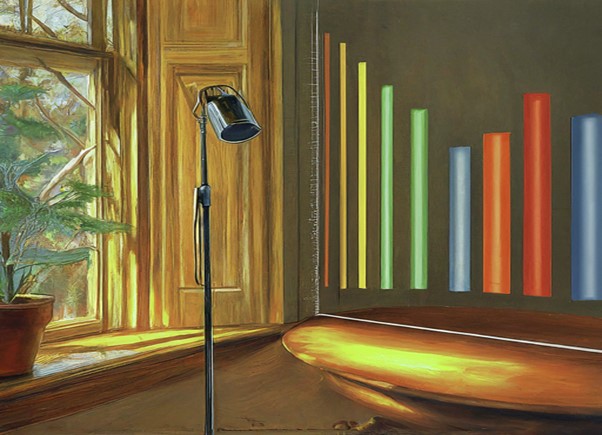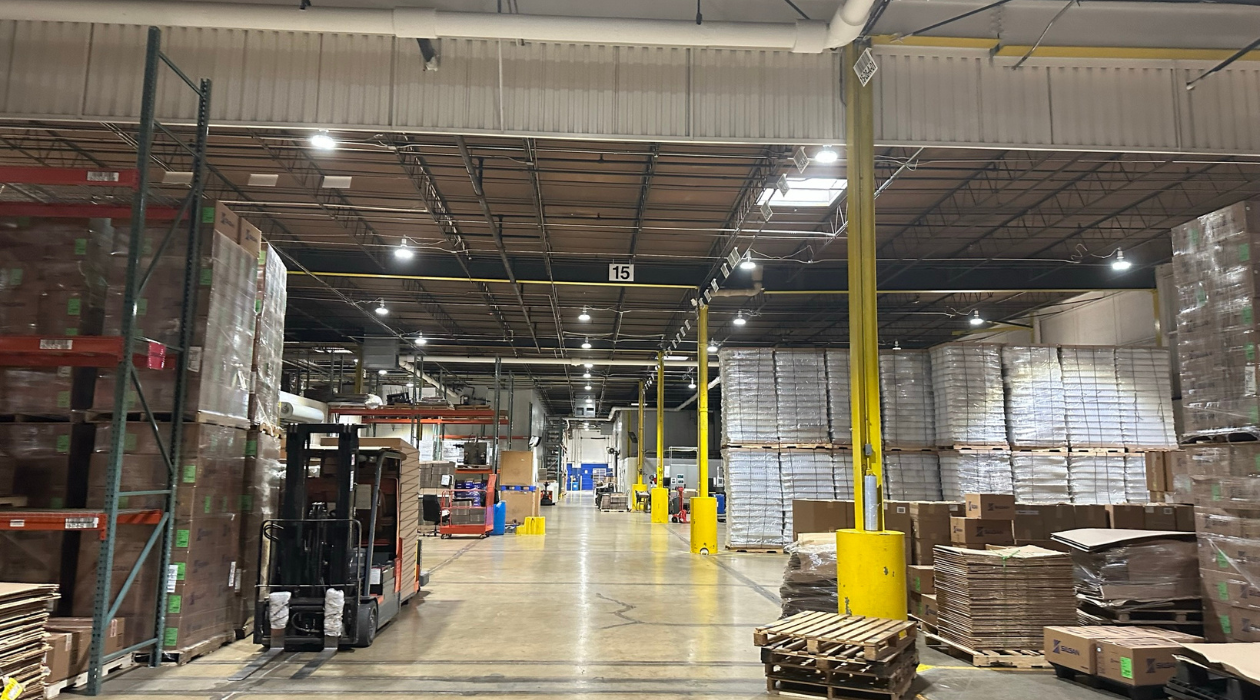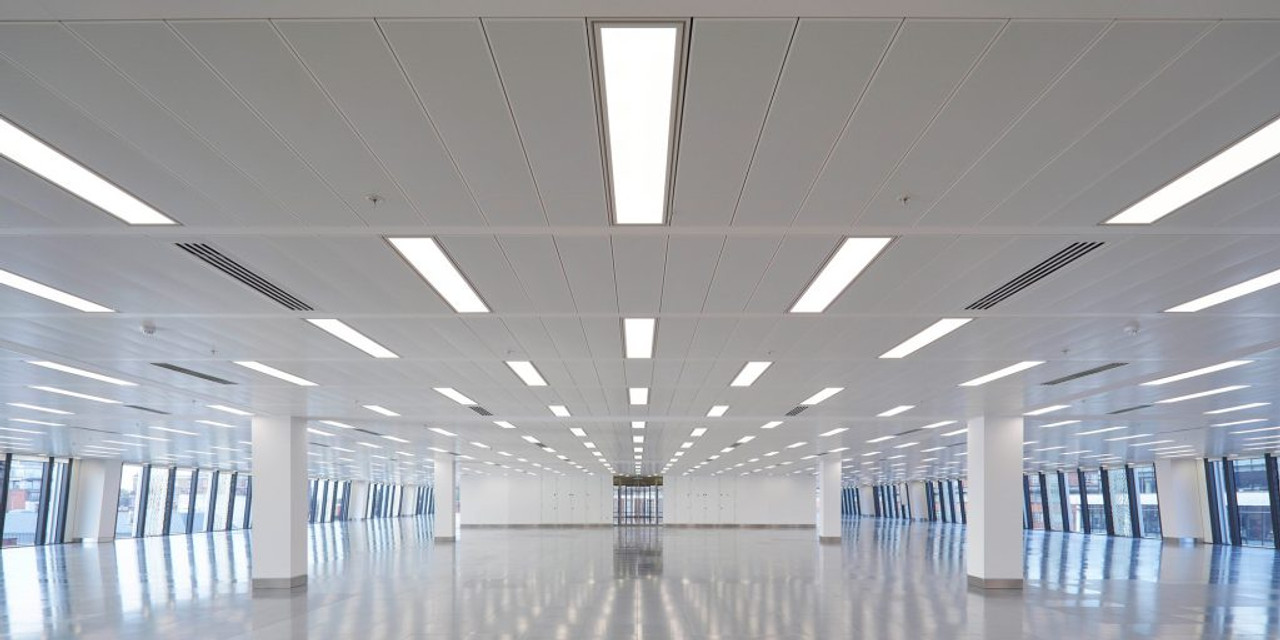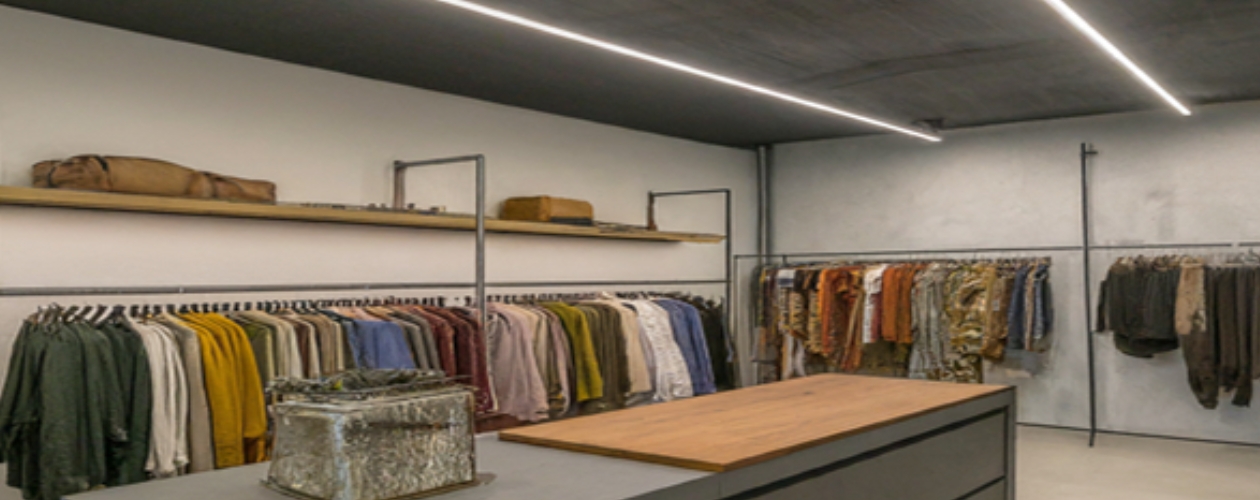102. Color Rendering Index (CRI) - Why Is It Important?
By Tia O'Brien • Jun 10, 2024
Have you ever bought bedding sets from a store only to see them in a different color under natural light? You may have thought your mind was playing tricks on you. Chances are you’re not alone. In fact, thousands, if not millions of individuals, have experienced similar scenarios.
What is at play here is a concept known as the Color Rendering Index (CRI). You probably have seen the abbreviation before on the packaging of LED lighting or stated on LED specificatin sheets. Perhaps you haven’t seen it before, or don't fully understand what it is, and so this article will explore CRI and what it means, particularly in the realm of industrial lighting.
Whether you’re a manager for a warehouse, commercial, or industrial building or a high-level executive in one of these facilities, understanding CRI will allow you to make informed decisions in several aspects. Let’s dive right in.
What Really is Color Rendering Index?
To fully understand what CRI is, you need to know the basic concept of what color rendering is. It is known as the ability of a light source to accurately reveal the colors of objects as they would appear under natural light. This is particularly an essential quality metric for lighting because it influences how different colors are perceived in places such as warehouses, art studios, retail stores, and even healthcare facilities.
The most popular measure of color rendering is the Color Rendering Index (CRI). The metric is usually rated between 0 and 100. According to the rating:
- 85 to 100 are deemed excellent and considered the most accurate color rendering
- 70 to 85 are considered good CRI, and generally acceptable for warehouse & industrial lighting
- Below 70 are generally considered poor CRI.
It is particularly known that natural sunlight reveals the true colors of objects, and so it has a CRI of 100. All sources of light have to be compared to natural sunlight. So, the more a light source has a rating closer to 100 – whether residential, commercial, industrial, or even warehouse lighting is – the more accurate the color of the object really is.

Difference Between Color Rendering Index and Correlated Color Temperature
There’s a bit of misunderstanding between how people view CRI and Correlated Color Temperature (CCT) based on the Kelvin scale, particularly with regards to industrial lighting. However, both concepts are not the same.
While LED lighting CRI measures the accuracy of a light source to reveal the true colors of objects, CCT is the measure of the color appearance of the light emitted by a light source. From what we’ve established so far, natural sunlight is the benchmark for CRI, and color temperature can change from warm, neutral, to cool.
So, basically, the main difference between the two is that CRI ascertains the quality of light in terms of color accuracy, while CCT looks to determine the ambiance and color appearance of a space under consideration. Thus, warm lighting can be used in residential spaces, while cool lighting is fit for offices and hospitals. It is important to note that some industrial lighting even with high CRI also come equipped with selectable color temperatures.
Color Rendring Index of Different Industrial Lighting
There are different Color rendering indexes for different lighting options. It is particularly vital to ascertain which industrial or warehouse lighting solution to go for:
- Incadescent bulbs. These bulbs are specially designed to have a CRI between 95 to 100, revealing the colors of objects as thogh they were under natural sunlight. This is usually because they have a spectrum that can comfortable reproduce a wider selection of colors.
- Halogen Bulbs. These bulbs are quite similar to incadescent bulbs producting a CRI between 95 to 100.
- LED Lighting. The CRI of LED lighting often ranges from 80 to 95. LED lighting is perfectly suited for general applications.
- Fluorescent Lights. These lights typically have a CRI of around 70, and may not work with some colors, because they have a relatively discontinuous spectrum.
- High-pressure sodium lamps. These lamps have a CRI between 20 and 40 and are usually suited for outdoor lighting.
- Metal halide lamps. Depending on the specific quality and type, these lamps produce a CRI of 60 to 90. They are commonly found in stadiums, large indoor spaces, and factories.

Why Is Industrial LED Lighting with High CRI Important?
Now that we’ve gotten the definition of CRI and the differences between it and CCT out of the way, how does it affect color perception? What roles does it play in warehouse lighting?
- Accuracy of color representation. As the color rendering index allows us to ascertain how a light source compares to natural sunlight in the display of colors, its rating can help us determine which lighting is authentic. For instance, a light source whose CRI is 95 means that colors will appear more natural. Similarly, a CRI of 40 means the colors of different objects will appear dull and distorted under natural sunlight.
- Clarity and detail. CRI is particularly vital when it comes to clarity between similar colors, especially under industrial or commercial lighting. A high CRI will allow managers and workers alike to see the subtle differences between similar colors. This is vital for precision-driven tasks such as textile production, printing, packaging, or other tasks involving quality control.
- Aesthetic Appeal. CRI also promotes aesthetic appeal. Under high LED lighting CRI, colors appear more vibrant and attractive. In settings like a shopping mall, art galleries, or gymnasiums where colors are on full display, this influences color interactions.
- Visual Comfort. Industrial LED lighting with a high CRI creates an appealing environment that exudes visual comfort. When the light brushes and reveals the true colors of objects, it provides less strain and fatigue for the eyes, allowing to make sense of these objects seamlessly.
- Architectural Design. In architectural designs, LED lighting with high CRI allows architects to create visually appealing spaces and structures for different moods.
- Entertainment Industry. When it comes to making movies, music videos, and theater production, industrial LED lighting with high CRI can achieve the best colors and visual design, allowing the audience to interact with the colors as intended by the makers.
The importance of Industrial LED lighting with adequate CRI cannot be overemphasized, as its applications are endless. In fact, LED lighting transforms educational environments for better learning. Thus, investing in such lighting is going to be beneficial in the long run.

Benefits of High CRI in Industrial Environments
We’ve sort of addressed some of the benefits of the Color Rendering Index in the previous section. But let’s talk about it in detail. How is having a high LED lighting CRI beneficial in industrial settings?
- Improved safety conditions. High CRI of industrial lighting ensures that safety signs, and labels, can be easily spotted in their authentic colors, reducing the risks of accidents. On the plus side, high CRI lighting can also allow workers to identify potential hazards or product defects before they ever get shipped out.
- High-quality control. One of the best ways to achieve uniform quality control across production batches is with an overhead high LED lighting CRI. These industrial lightings are going to drastically reduce the need for products to be reworked.
- Improved energy efficiency. One of the accompanying benefits of high color rendering index lighting is that they come with energy-saving efficiency. At the end of the month, your power consumption will be significantly reduced while providing ample lighting for your warehouse, commercial, or industrial facilities.
- Longer lifespan. Investing in high CRI LED lighting is profitable as these lights are known for their long lifespan, reducing regular maintenance and replacement costs.
- Flexible designs. LED technology allows lighting with high CRI to be customizable in different designs, including options like color temperature and dim, allowing individuals to create different lighting options for different scenarios.
Incorporating high CRI lighting in industrial settings will enable businesses and companies to achieve better product delivery and favorable outcomes for a seamless working environment.

Real-World Applications of Industrial LED Lighting With High CRI
Industrial LED Lighting has several real-world applications. Some of these examples include the following:
- Retail stores. In high-end luxury retail stores, high industrial LED lighting CRI can attract more customers and influence purchase decisions, as the colors are accurately represented. When such lighting has a low CRI, the clothing will be less appealing to the customers.
- Museums. Art galleries and museums heavily utilize high CRI industrial lighting to display the authenticity of artworks. But much more than that, these lightings convey the artist’s intended expression in its truest form.
- Outdoor lighting. Street lighting with a high color rendering index can improve visibility and safety in a remarkable manner. For drivers and motorcyclists, these lights make road and traffic signs and signals more recognizable in the dark.
- Healthcare. Industrial lighting with high CRI allows medical professionals to objectively identify potential health issues on patients, and creates a calm and comfortable environment for them.
CRI industrial LED lighting has diverse applications across different industries, fostering accuracy, visibility, and quality in handling tasks.
In conclusion, businesses, products, and facilities will benefit from embracing high-quality CRI lighting. But first, you need to be fully aware of the CRI values when selecting different lighting options, as it would allow you to make informed decisions that will align with your objectives. For B2B or B2C brands, implementing high CRI industrial lighting can improve customer satisfaction, leading to an increase in sales and productivity.
OEO Energy Solutions is a leading LED lighting manufacturer and distributor, assisting creative directors, artists, building contractors, and managers in bringing their vision to life in its truest, purest form. Our experience stems from a comprehensive understanding of CRI and its seamless implementation in promoting maximum results.
Contact us to learn about our unique services and elevate your lighting solutions today.
